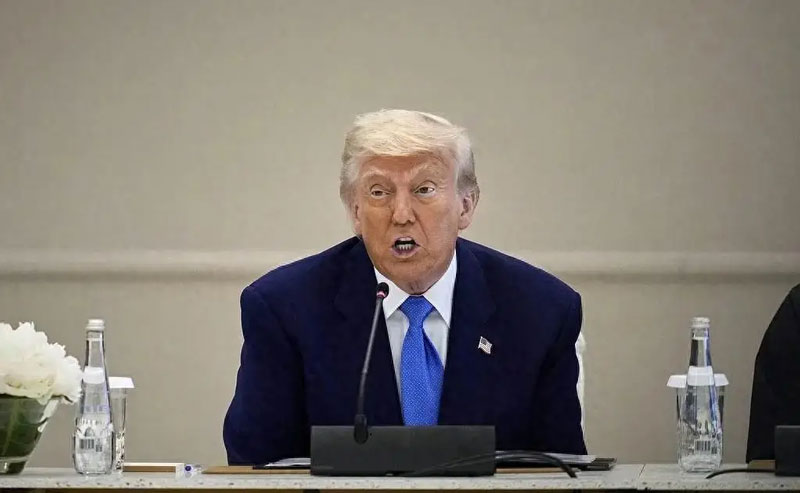After ending his trip to the Middle East on Friday, May 16, US President Trump publicly stated that the United States lacked the ability to reach agreements with all trading partners through negotiations, and announced that new tariffs would be set in the next three to four weeks. This statement followed Trump's "reciprocal tariff" policy announced on April 2, which imposed a 10% base tariff on all countries and higher tariffs on some countries, aiming to encourage countries to reach new trade agreements with the United States.
Trump then announced that he would postpone the imposition of tariffs on some countries for 90 days, and conduct further negotiations with various countries during this period to seek a new agreement. However, after nearly a month of negotiations, only the United Kingdom and the United States reached a new tariff agreement. As for China and the United States, although there has been some easing, a complete agreement has not been reached. In addition, negotiations with the United States, Japan, South Korea, Mexico, India, the European Union, etc. have been slow, and the conclusion of an agreement seems increasingly hopeless.
Currently, the United States has negotiated with more than a dozen countries, but progress has been significantly slow. Trump originally imagined that countries would actively seek to reach an agreement with the United States, but the actual situation is not the case. After sending negotiation signals to China many times, China finally agreed to negotiate after full evaluation and reached a certain degree of trade easing, although tariffs are still high and further consultations are needed. For Japan, the negotiations have gone from active promotion in the early stage to the current stalemate, especially on the issue of tariffs on auto parts. The Japanese side is not eager to compromise, but has begun to demand a reduction in relevant tariffs. Similarly, the European Union also expressed its disagreement with the agreement template reached by the United Kingdom and the United States, and may take countermeasures if the auto tariffs cannot be reduced.

Negotiations with other countries have been repeatedly blocked, and Trump also realized that if he continued to insist on negotiations, the US negotiators would face great pressure and might find it difficult to cope with this situation. In this context, Trump decided to directly formulate new policies instead of relying on negotiations. This approach is actually similar to overlord clauses, which may cause other countries to counter or directly refuse to trade with the United States.

However, Trump's tariff policy did not achieve the expected effect, but instead brought great pressure to the US economy, businesses and consumers. Trump's original intention of imposing tariffs was to bring manufacturing back to the United States, but from the current situation, this policy has failed to achieve its goal. Not only has it failed to promote the return of manufacturing to the United States, but it has also led to a decline in investment expectations. Especially in the semiconductor industry, related companies in the United States originally planned to bring some of their businesses back to their home country, but Trump's tariff policy has invisibly increased uncertainty and even caused Samsung to postpone its wafer plant construction plan in Texas from 2024 to 2028.
This change further shows that Trump's tariff policy has not only failed to promote the return of the semiconductor industry, but has made this process slower, while also exacerbating the problem of rising domestic prices. Especially after Sino-US trade has eased to a certain extent, retail giants such as Walmart have warned that the US government's tariff policy has led to rising commodity prices in April and May, and with the implementation of more tariff measures, the price increase is expected to be more obvious in late May and June.
American consumers are facing rising prices for necessities, and although they may be reluctant to adapt, their purchasing power for non-necessities will be further limited. A large number of US retail goods come from China. Although the Sino-US trade relationship has eased to a certain extent, the tariff is still as high as 30%, far higher than the historical level. Faced with such tariff costs, neither Chinese nor American companies are willing to bear them, so the final cost can only be paid by American consumers.

Trump and his Secretary of Commerce Howard Lutnick have said that the cost of increased tariffs will not be borne by American consumers, but by foreign companies exporting to the United States. However, this logic ignores the reality: if foreign companies choose not to enter the US market, then American-made products will not be able to meet demand, leading to price increases.

The vague answer of US Treasury Secretary Bessant when asked who will bear the cost of tariffs actually proves this point. Trump's tariff policy has made investors pessimistic about the prospects of the US economy. Although China and the United States have reached a certain degree of agreement, the risk of recession still exists. In addition, the tariff storm has also affected the Fed's policy, and maintaining high interest rates may put companies under greater financial pressure.

Although the stock market has rebounded recently, the future trend is still full of uncertainty due to the impact of tariffs. If Trump announces higher tariffs in the coming weeks and no longer negotiates, it could trigger more countermeasures, further exacerbating the negative impact on the economy.


%20--%3e%3c!DOCTYPE%20svg%20PUBLIC%20'-//W3C//DTD%20SVG%201.1//EN'%20'http://www.w3.org/Graphics/SVG/1.1/DTD/svg11.dtd'%3e%3csvg%20version='1.1'%20id='图层_1'%20xmlns='http://www.w3.org/2000/svg'%20xmlns:xlink='http://www.w3.org/1999/xlink'%20x='0px'%20y='0px'%20width='256px'%20height='256px'%20viewBox='0%200%20256%20256'%20enable-background='new%200%200%20256%20256'%20xml:space='preserve'%3e%3cpath%20fill='%23FFFFFF'%20d='M194.597,24.009h35.292l-77.094,88.082l90.697,119.881h-71.021l-55.607-72.668L53.229,232.01H17.92%20l82.469-94.227L13.349,24.009h72.813l50.286,66.45l58.148-66.469V24.009z%20M182.217,210.889h19.566L75.538,44.014H54.583%20L182.217,210.889z'/%3e%3c/svg%3e)